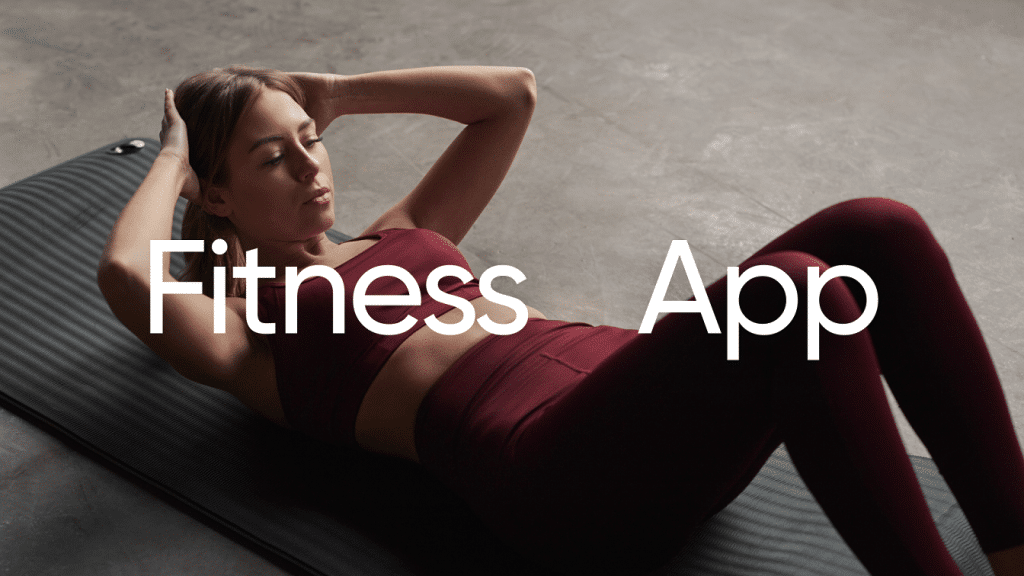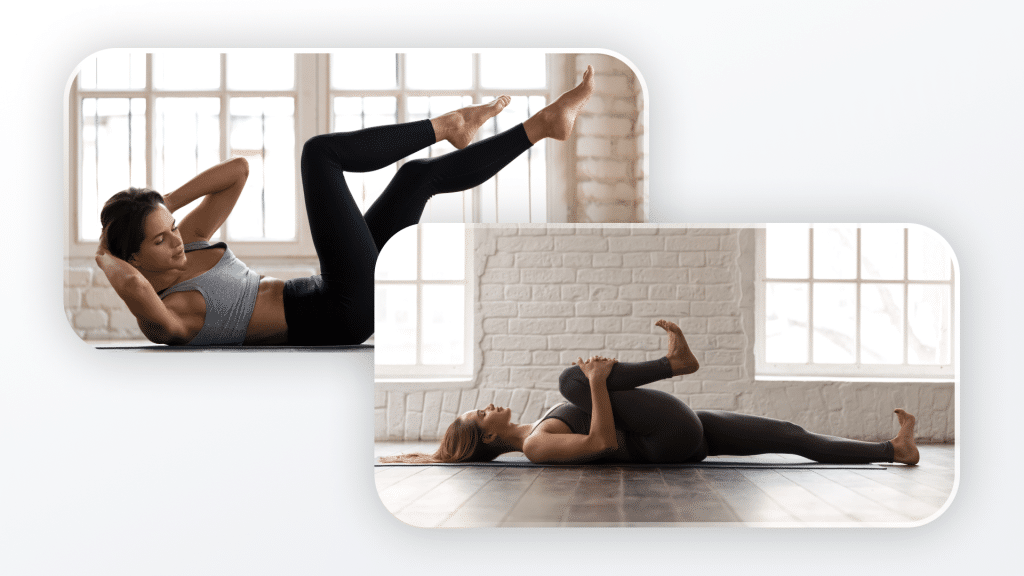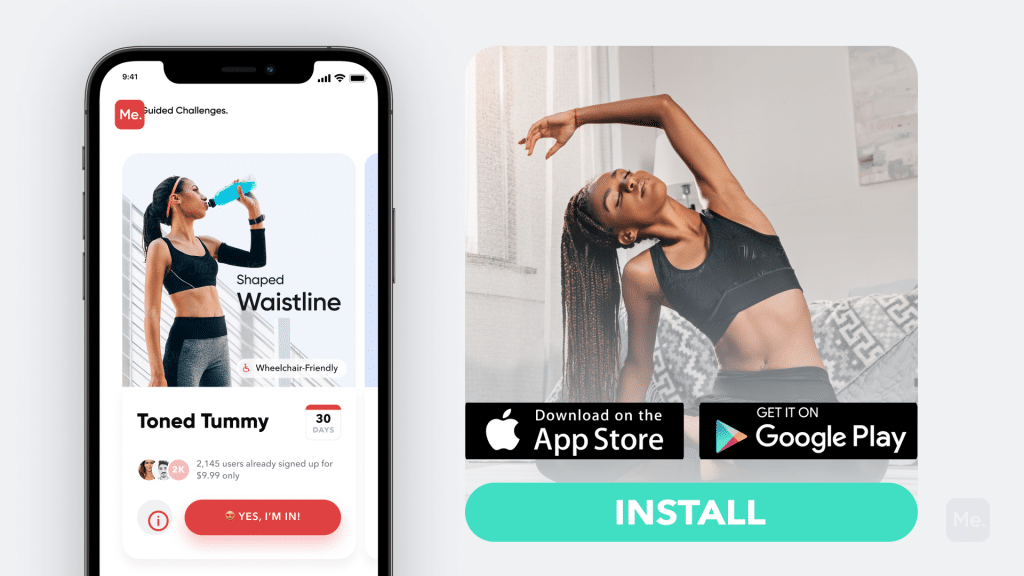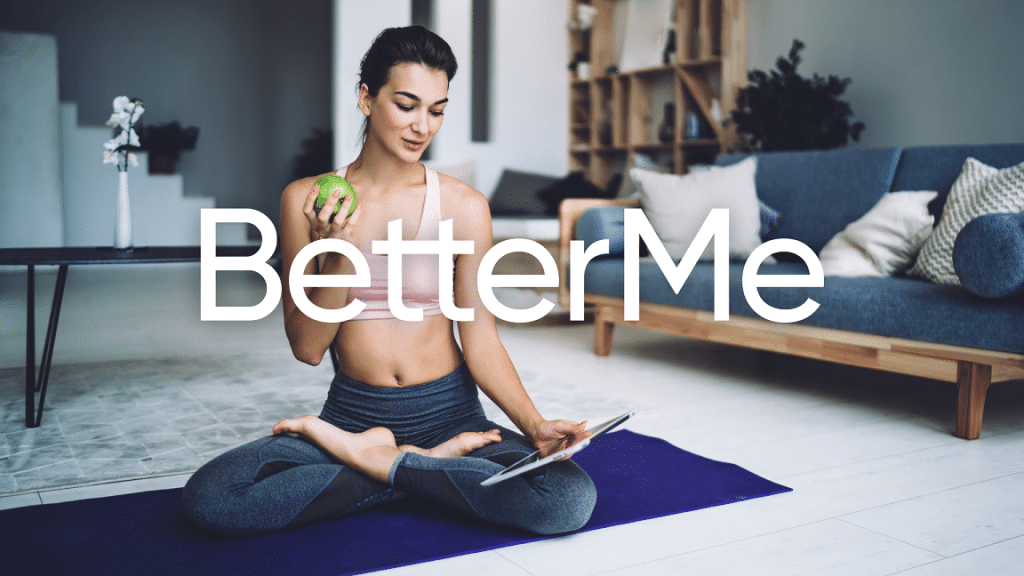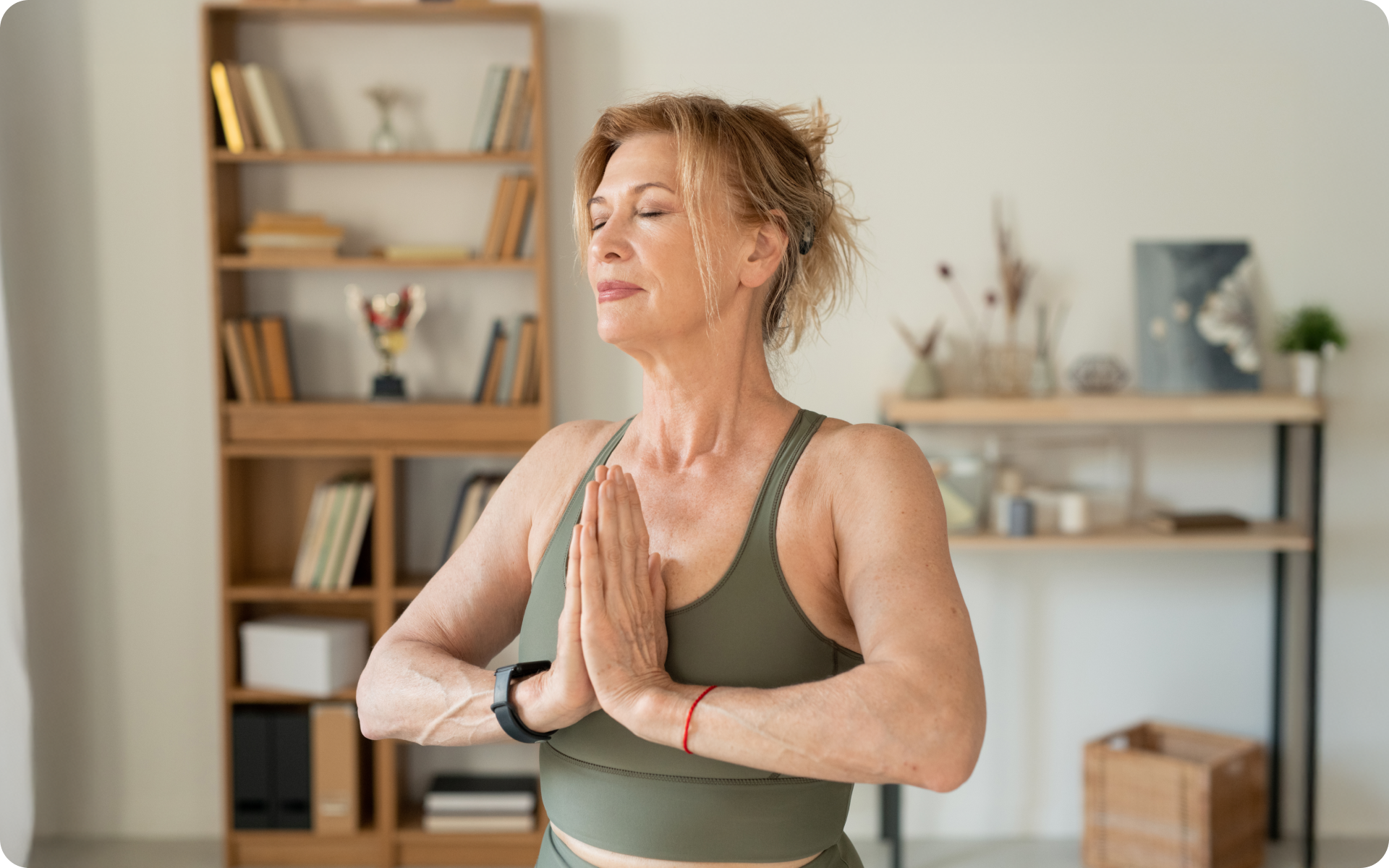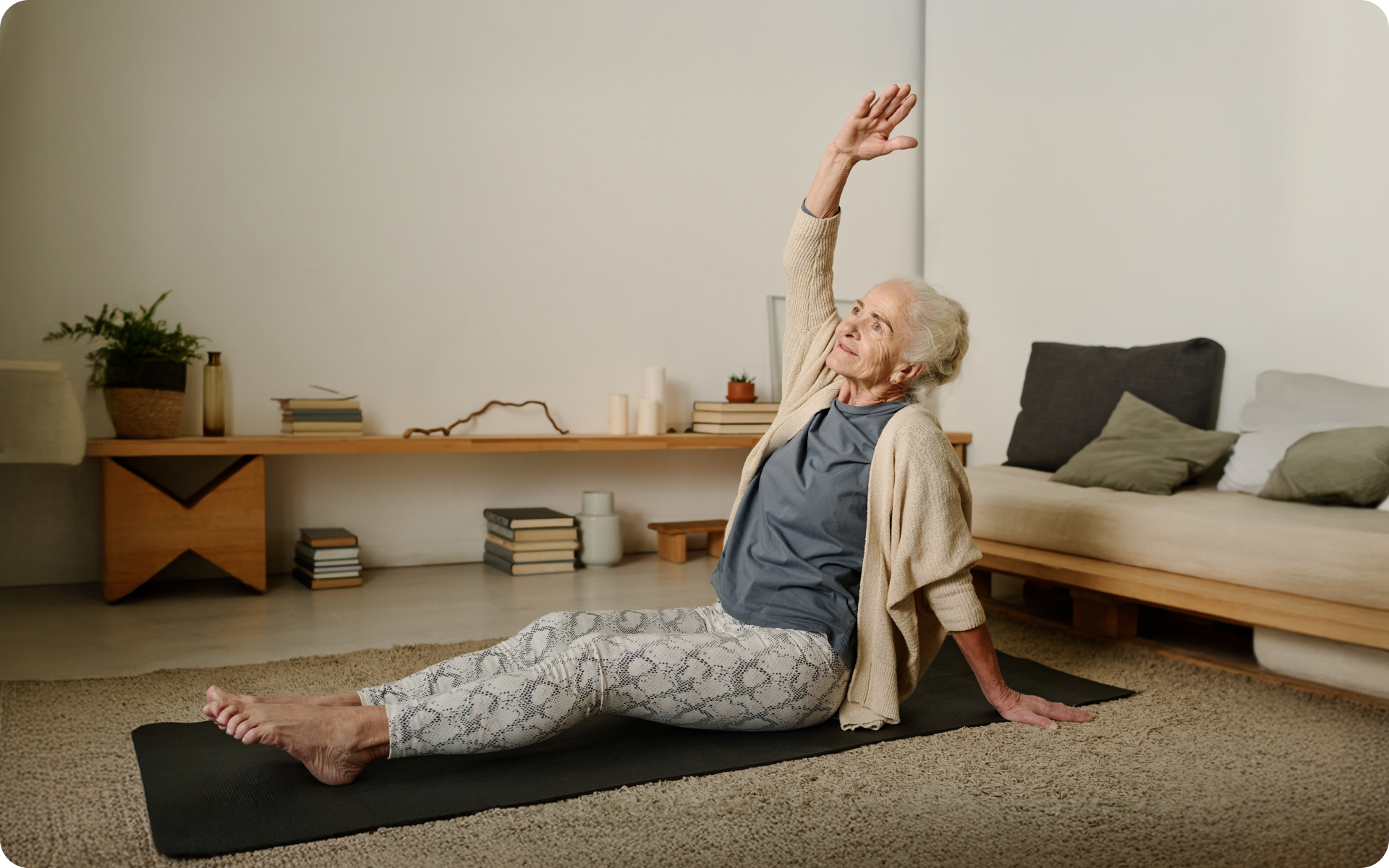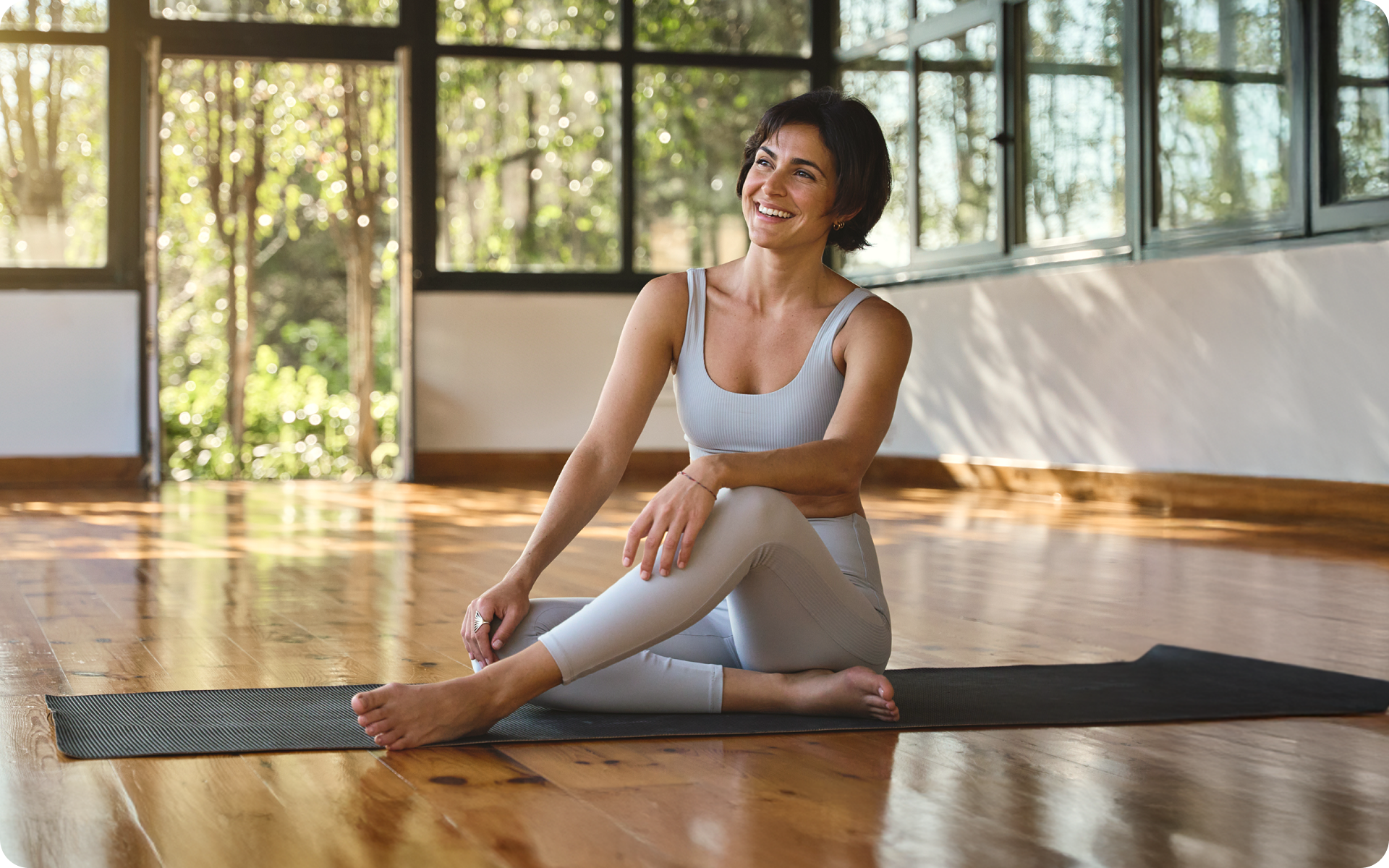Some say inversion yoga poses are only for professional and dedicated yogis with years of experience. They say they are too difficult and more dangerous than beneficial. Well, these are likely the people who’ve never tried them and don’t know anything about yoga inversion benefits, of which there are plenty. Besides, there are poses which are so easy a beginner can do them. In this full guide you’ll find out everything there is to know about the benefits of inversions in yoga, why do these poses, what they are, potential risks, etc. Let’s break the stereotypes and finally start taking our body possibilities seriously. Yoga can calm your mind and tone your body, and there are so many varieties that it may be hard to remember the whole list. That said, once you master the easiest poses you should definitely try the inversions that I’m going to show you today.
Get your personalized
meal plan!
What Are Yoga Inversions?
Yoga inversions are poses or asanas, as they are called, that are “inverted”, meaning your head is positioned below your heart and hip levels. The goal is to change the body’s upright position, to “invert” it.
There are many such positions, from the easiest ones to the most perfectly inverted and obvious one – the headstand. Unfortunately, many think this is the only correct yoga pose, therefore consider going upside down as something impossible for a beginner.
This isn’t true, and the list of poses you’ll find later in the article will prove that.
Inverted yoga strengthens muscles, releases tension, increases energy levels, and calms your mind.
Benefits Of Yoga Inversions
What are the benefits of inverting? There are so many, both for your physical and mental health.
Circulation Increase
Such poses improve blood circulation and lymph flow and drainage, which will help deliver oxygen and nutrients to your body. Your blood will become more enriched with oxygen as it will run from the pelvis to the heart and then to the lungs, where the process happens. If you need this effect and also lower your heart rate, this is a great option (2).
Energy Level Increase
One of the benefits of yoga inversions is energy level increase. The approach can also increase alertness, which you should be aware of. Mood improvement may be present due to the improvement in oxygen and nutrient uptake. Expect your serotonin, dopamine, and endorphins soon after you start your yoga session.
Flexibility And Strength Improvement
Inverted yoga improves flexibility and strength, which is logical since it’s a type of physical activity, so it will definitely tone you a little bit. People aged 60 and over can also benefit from such activities if they practice gradually, avoiding injuries.
The asanas require body-mind connection training and strength in addition to flexibility. It’s difficult for a beginner to hold their body, stretched out against gravity. This process, in the long run, increases the strength and endurance of your muscles (4).
Confidence Boost
Another benefit of inversions in yoga is potential self-esteem and confidence boost. This is logical because of two reasons:
- Yoga changes your body appearance, making it more toned and balanced
- Yoga improves your mood and calms your mind, so insecurities may move to the background
You become more patient and mindful, and your mindset changes over time, which makes you change priorities. Besides, the time and practice you’ll need to master the asanas will change the way you think about yourself. Managing something as complex as the headstand will definitely improve your sense of self-worth and confidence.
Swelling And Pain Reduction
Benefits of the inverted yoga include swelling and pain regulation and reduction. By changing the position of your body, you change the way gravity impacts the fluid inside you. Thus, you help your lymphatic system carry the fluid higher and promote healthy circulation.
The lymph removes waste from your body and helps maintain fluid balance (5).
The blood flow can also improve as you do inverted poses, moving easier from the limbs to your heart. This may help with pressure issues and pains. Standing and seated work aren’t the best for our lower limb blood flow (6).
Read More: Easy Yoga Challenge Poses For Beginners
Immunity Increase
One of the beneficial results of improved blood flow and lymphatic drainage is a stronger immune system. Toxins are removed from your body faster and more efficiently and your blood enriches itself with nutrients and oxygen better.
What’s not to like?
Relaxation And Stress Relief
Some inversion yoga asanas, such as hand and headstand, help you energize and get ready for the day. Others, like when you keep your legs up on the wall, on the other hand, help you relax and cool down after a long day.
Stress relief is crucial in modern life. And if it’s connected to physical activity – you’re already doing two amazing self-care things.
Balance Improvement
Going upside down improves your balance due to the training of core muscles. Better balance means:
- Pain reduction
- Lower risk of injury
- Improved body appearance
- Perks for walking and running properly, and more
There are many balance exercises, but yoga helps you achieve several goals at once. These are better balance, better body quality, mindfulness, and mood improvement.
Core Strength Improvement
A lot of yoga poses engage your core for balance. When we talk about inversion yoga poses, the importance of a strong core increases even more. After a month of training or less, you will feel how the core muscles become stronger, your balance improves, and it becomes much easier to do asanas.
You can check the progress by doing a plank every week for at least 30 seconds. Every 7 days you’ll feel how it becomes easier to resist gravity. That’s the benefit of yoga inversions in action!
Posture Correction
By training and toning core and back muscles, inverted yoga can help you improve posture. Poor posture is a very relevant problem nowadays as people look down on their phones and sit around in offices a lot.
Opening your chest, pulling shoulders down from your neck, and engaging your core will only bring benefits. You’ll feel how you can breathe deeper, bringing that oxygen right to your blood.
BetterMe app will provide you with a host of fat-frying fitness routines that’ll scare the extra pounds away and turn your body into a masterpiece! Get your life moving in the right direction with BetterMe!
Risks And Precautions To Know About
Avoid inverted yoga if your have
- Neck injuries
- Head injuries
- Joint conditions
- High blood pressure
- Glaucoma, etc.
You can substitute these asanas with other ones like a reclining butterfly.
If you have a joint condition or feel pain and severe discomfort when doing yoga inversions, make absolutely sure to consult a specialist. Do not attempt to do any of the inversion yoga poses if your doctor tells you it’s not safe. There are other ways to introduce physical activity and stress relief into your life.
Also, if you’re on your period, consider using other ways to train your core or do non-inverted asanas. It’s your choice as there’s no definitive research on whether it’s a bad idea to practice inversion yoga during your period. But nature needs to do its thing and it’s connected to the downward flow, so it may be a good idea to not mess with it.
As for pregnancy, the practice of inversion yoga and its benefits depends on your pre-pregnancy practice. If you’re a pro yogi, you can do some easier asanas that are safe. However, attempting to do a difficult pose can lead to falls, which may be dangerous both for you and the baby.
Also, make sure you have enough free space around you or practice in a corner of a room. This lowers the risk of injury.
Tips On Going Upside Down
Before you start practicing, here are some tips that will help you along the way and make every session much more pleasant.
Practice Regularly
To be able to do a headstand, you’ll have to practice regularly. As I write in each post – consistency is the key to success. First, you’ll fall a lot and maybe even feel like this isn’t going to work for you. But consider practicing every couple of days, and in a month, you’ll see great progress.
Trust the process and remember that practice makes perfect. It’s a cliche, but a good one!
Start From Easy Asanas
If you try a headstand on the first yoga practice day, you’ll likely fail and may not want to attempt yoga ever again. Same with a full fold, which seems so easy but straightening your knees can be a challenge.
So, it’s better to start easy. Be loyal to yourself and let yourself make mistakes and master downward-facing dog, for example. At first, your knees will bend and your hands won’t allow you to stand like this for a longer time. But then, you’ll feel how your back and the back of the legs are stretching, and you’ll be ready to try another, more complicated, asana.
Learn To Fall Safely
Why are yoga inversions so hard? Because it needs balance, and balance needs to be practiced just like yoga or any other physical activity.
There’ll be a lot of falling. That said, learn how to fall safely to avoid injuries. Try to embrace the fall, to be relaxed when you land on the floor. You can also practice these falls to make sure you don’t jeopardize your health. Fall on the meatiest, largest parts of your body so that the impact is dispersed properly.
Focus On Your Core Muscles
When practicing, make sure your core muscles are toned and engaged all the time. Some deeper core muscles are responsible for balance, they help you perform better. Likewise, inverted yoga poses will help you boost balance.
Open Your Neck And Chest
When doing the stands and folds, don’t forget to open your neck and chest. Don’t bring your shoulders all the way up to your chin. Breathe deeply and open up like a flower.
Be Mindful
Yoga isn’t the type of physical activity you can just get distracted from to finish the session faster. Focus on your muscles, feel each one when practicing, and remain connected to your inner self. Try to leave the thought stream above or behind you and let it flow, but pay attention to what’s happening in your body.
Learn About Your Body
Many people spend their lives unaware of who they are and what bodies they have. Learn about your body, see what’s comfortable for you and what brings unpleasant feelings. Pay attention to your joint condition during the asanas and do what feels good.
Breathe
Don’t forget that yoga is also a breathing practice. Breathe deeply and loudly, if this is what makes you feel good. Many tutorials offer breathing instructions for every movement, which can help you get used to it.
TOP Inversion Yoga Poses
There are countless flows in yoga you definitely have to try. Some of them are for relaxation, while others are for energizing when you need it. There’s yoga for everything from digestion to chakra balance.
Here, we’ll see some separate asanas from inversion yoga that will help you start. The first three are quite easy, the other ones are more sophisticated.
Downward-Facing Dog
The downward-facing dog is one of the most popular poses in yoga. It’s the most basic one yet is packed with benefits. And it can be the measurement of your physical progress. The easier it is to stand like this, stretch your hamstrings and calves, stretch your back and chest, and move within the pose, the better.
Here’s how to do it:
- Stand on hands and knees, making sure the palms are located right under shoulders and knees are under your hips.
- Straighten your legs and lift your pelvis up to create an upside-down V shape. You may not succeed at first, and it’s okay. Just stretch as far as you possibly can without discomfort.
- Position your head between shoulders and look down.
- Stretch your spine and try straightening your legs further. At first, you’ll bend your knees, and it’s totally fine.
- Stand like this for 30-60 seconds, then release.
Child’s Pose
This is a simple, highly relaxing pose that relieves and stretches your spine, hips, shoulders, and neck.
And here’s how to do it:
- Stand on hands and knees, in the table position.
- Sit backward and touch your knees with your chest.
- Put your forehead on the floor or yoga mat, arms stretched out.
- Remain in this position for 30-60 seconds.
Legs Up The Wall
The legs up the wall pose is by far the easiest one that allows you to invert your body without standing on your head or shoulders. Perfect for beginners. It helps you stretch the legs and lower back, decrease lower back pain, and improve lymphatic flow.
Here’s how to do it:
- Put a towel on the floor parallel to a wall and sit on it.
- Lie down with your feet and butt as close to the wall as possible.
- Raise your legs up, feet parallel to the floor, and touch the wall.
- Relax your knees and feel the stretch in your legs and lower back.
- Keep the position for 5-20 minutes and breathe slowly and deeply during this time.
Forward Fold
This asana will stretch your hamstrings, back, sides, and calves. To do it:
- Place your feet hip-width apart.
- Raise your hands up.
- Start moving the arms down the sides of your body and slowly lower your whole body down.
- It’s perfect if your knees are bent just a little bit, but if you lack flexibility for now, do what feels right; just avoid locking the knees.
- Place both hands on the floor and feel the stretch in your muscles, while the head is hanging down freely.
- Hold the pose for 30-60 seconds and slowly raise up.
You can do the same fold with legs standing wider than the shoulder width for a deeper stretch. This is a more suitable position for a beginner, and it also stretches the muscles of your inner thighs.
Betterme will keep you laser-focused on your weight loss journey! Nutrient-packed meal plans, fat-blasting workouts, galvanizing challenges and much more. Try using the app and see for yourself!
Shoulder Stand
A calming pose, although a bit complicated, will help you move the lymph from the limbs and relax after a long day. To do it:
- Place two folded towels on the mat or floor
- Lie on your back, make sure your head is not on the towels, but a part of your neck and shoulders are.
- Put your hands to the sides, spread your fingers, and press down.
- Bend your knees and bring them to your chest.
- Lift your back up and put your hands on your hips.
- Bring your knees higher to the forehead with feet above your head.
- Put the knees further to the sides of your head with toes getting closer to the mat. With practice, you’ll be able to touch the floor or mat with your toes.
- Straighten your legs slowly, as much as your current physical state allows.
- Engage your core muscles and move one leg up off the floor towards the ceiling. Make sure your hands are still supporting you.
- Join the first leg with the second one. Move slowly, breathe deeply, and try to relax.
Summary
The benefits of inversions in yoga can’t be doubted. They help you lift energy levels, tone your body, and clear your mind. If you read the cautions carefully and use yoga as an instrument for better health and mentality, you’re going to win either way.
Inversions are good for limb swelling and circulation, but they require practice. So, if you can’t do a headstand on the first try, don’t get discouraged. First, try to master the downward-facing dog or even just the legs-up asana. As you feel the stretch, your muscles become stronger, and your balance improves, you’ll be able to try the more difficult poses from the list in this article.
Go gradually and don’t forget that any progress counts.
DISCLAIMER:
This article is intended for general informational purposes only and does not serve to address individual circumstances. It is not a substitute for professional advice or help and should not be relied on for making any kind of decision-making. Any action taken as a direct or indirect result of the information in this article is entirely at your own risk and is your sole responsibility.
BetterMe, its content staff, and its medical advisors accept no responsibility for inaccuracies, errors, misstatements, inconsistencies, or omissions and specifically disclaim any liability, loss or risk, personal, professional or otherwise, which may be incurred as a consequence, directly or indirectly, of the use and/or application of any content.
You should always seek the advice of your physician or other qualified health provider with any questions you may have regarding a medical condition or your specific situation. Never disregard professional medical advice or delay seeking it because of BetterMe content. If you suspect or think you may have a medical emergency, call your doctor.
SOURCES:
- What to Know About Legs-Up-the-Wall Yoga Pose (2021, webmd.com)
- Exploring the therapeutic effects of yoga and its ability to increase quality of life (2011, ncbi.nlm.nih.gov)
- Yoga Poses Increase Subjective Energy and State Self-Esteem in Comparison to ‘Power Poses’ (2017, ncbi.nlm.nih.gov)
- Yoga-based exercise improves balance and mobility in people aged 60 and over: a systematic review and meta-analysis (2016, pubmed.ncbi.nlm.nih.gov)
- Effects of a 12-Week Hatha Yoga Intervention on Cardiorespiratory Endurance, Muscular Strength and Endurance, and Flexibility in Hong Kong Chinese Adults: A Controlled Clinical Trial (2015, ncbi.nlm.nih.gov)
- Lymphatic System Flows (2019, ncbi.nlm.nih.gov)
- Lower limb blood flow and mean arterial pressure during standing and seated work: Implications for workplace posture recommendations (2018, ncbi.nlm.nih.gov)

